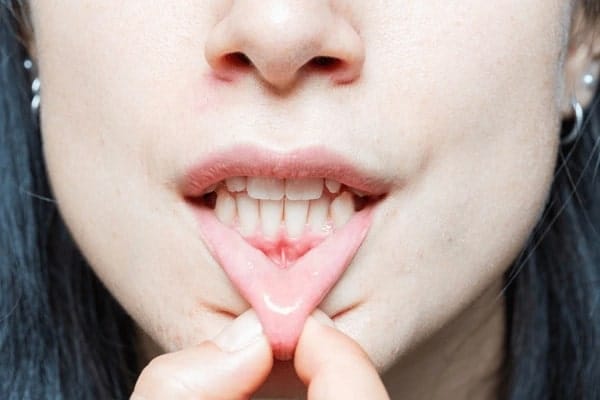Dental implants are a commonly used option for replacing missing teeth, but like any procedure involving the body, they are not without potential complications. One such issue is the development of infection around the implant site. Understanding how these infections occur, recognising their symptoms, and knowing how they are managed can help patients make informed decisions about their ongoing oral health care.
What Are the Early Signs of Infection Around a Dental Implant?
Recognising the early symptoms of a dental implant infection is vital for prompt management. Infections often begin subtly and can gradually worsen if not addressed. Signs may include:
- Redness or inflammation in the gum tissue around the implant
- Bleeding during brushing or flossing
- Persistent bad breath or unpleasant taste
- Swelling or tenderness at the implant site
- Loosening of the implant
- Pus discharge
- Bone loss evident on radiographs
These symptoms could indicate peri-implantitis, a condition that involves inflammation and potential bone loss around the implant.
What Causes Infection Around a Dental Implant?
Multiple factors may contribute to an implant site becoming infected. These risk factors vary between individuals and can include:
- Inadequate oral hygiene
- Smoking
- History of gum disease
- Uncontrolled medical conditions, such as diabetes
- Poorly aligned or overloaded implant restorations
- Missed maintenance visits
Infections can arise soon after implant placement or even years later due to poor long-term care. Preventive strategies are a crucial aspect of long-term implant success.
How Are Mild Infections Around Dental Implants Treated?
When infection is identified early, it may be managed using non-surgical methods. These aim to reduce the bacterial load and halt disease progression.
Common non-surgical management approaches include:
- Mechanical debridement: Removal of plaque and calculus from the implant surface
- Antimicrobial mouth rinses: Chlorhexidine-based products may be used under professional direction
- Systemic or localised antibiotics: Depending on the extent and type of infection
- Personalised hygiene instruction: Improved home care to manage oral bacteria
- Laser decontamination: Where suitable, under clinical judgment
These treatments are tailored based on the individual’s clinical condition, overall health, and response to care.
What Happens If the Infection is Severe or Progresses?
If the infection advances or is associated with significant bone loss, surgical intervention may be necessary. These procedures are generally recommended after a thorough clinical assessment and may include:
- Flap surgery to access and clean contaminated areas
- Guided bone regeneration to repair lost bone around the implant
- Implantoplasty, a smoothing of the implant surface to reduce bacterial accumulation
- Removal of the implant if preservation is no longer viable
Surgical options are considered only when other measures have not resolved the infection or when the implant’s stability is compromised.
What Is the Difference Between Non-Surgical and Surgical Treatment Options?
The following table outlines key differences between non-surgical and surgical methods for managing infection:
| Treatment Option | Used For | Invasiveness | Requires Diagnosis? | Risks/Considerations |
| Antibacterial Mouth Rinse | Mild inflammation | Low | Yes | May cause staining, limited in deep infections |
| Mechanical Debridement | Removal of bacterial biofilm | Low | Yes | Requires professional expertise |
| Local/Systemic Antibiotics | Bacterial infection management | Moderate | Yes | Risk of antibiotic resistance, short-term use |
| Flap Surgery | Deep cleaning and decontamination | High | Yes | Surgical healing and associated risks |
| Bone Grafting | Restoring lost bone structure | High | Yes | Individual planning and case assessment required |
| Implant Removal | Final option in advanced cases | High | Yes | Reassessment for future restoration necessary |
How Can Patients Help Prevent Infection Around Dental Implants?
Prevention is the most effective approach. Patients are encouraged to:
- Attend regular dental check-ups and professional cleans
- Practise thorough brushing and flossing daily
- Use adjunctive aids such as interdental brushes or water flossers
- Refrain from smoking
- Follow all postoperative care instructions
- Inform their dental practitioner of any changes in general health
Ongoing maintenance visits allow early detection of peri-implant inflammation and help ensure long-term implant success.
Why Is Early Detection So Important?
Infections around dental implants do not always cause pain in the early stages, which means patients may not be aware of developing problems. By attending routine dental visits, practitioners can identify subtle signs of peri-implant inflammation, assess pocket depth, and take radiographs to evaluate bone levels. Early intervention may prevent the need for more complex treatments.
How Do Dental Practitioners Diagnose and Monitor Implant Infections?
A thorough clinical examination is essential, often including:
- Assessment of soft tissue condition and probing depths
- Evaluation of bleeding and pus on probing
- Radiographs to compare bone levels
- Monitoring implant mobility
- Medical history review to identify systemic factors
The approach is individualised for each patient, with treatment plans adapted accordingly.
When Is Implant Removal Considered?
In rare cases where infection has led to severe bone destruction or where the implant is mobile and cannot be stabilised, removal may be considered. This is generally only done after a thorough discussion with the patient about the risks, potential outcomes, and replacement options. Removal may be followed by a healing phase and assessment for future restorative options.
Why Is It Essential to Consult With a Qualified Dental Professional?
Because symptoms, risk factors, and dental implant treatment suitability can vary so widely between individuals, it’s essential to receive a personalised diagnosis and treatment plan. Treatment should only be carried out after full clinical evaluation, and where appropriate, patients may wish to obtain a second opinion.
Looking for Trusted Advice on Dental Implant Health?
At Palm Beach Dental, our caring and experienced dentist takes a personalised approach to your oral health. We understand that every smile is unique, and managing infections around dental implants requires more than a one-size-fits-all approach. With thorough diagnosis, state-of-the-art technology, and a strong focus on patient comfort and education, we are committed to helping you maintain the longevity of your dental implants. Whether you’re noticing early signs of irritation or seeking professional implant care, we invite you to schedule a consultation and take a proactive step in protecting your oral health.
Important FAQs
Q1. What is peri-implantitis?
Peri-implantitis is a condition where inflammation and bone loss occur around a dental implant. It can lead to implant failure if not addressed early.
Q2. Can an infected implant be saved?
Depending on the severity, early-stage infections may be managed successfully with non-surgical interventions. Advanced cases might require surgical treatment or removal.
Q3. How do I know if my dental implant is infected?
Common signs include swelling, bleeding, discomfort, bad breath, or loosening of the implant. A dental professional can confirm the diagnosis.
Q4. Is it painful to treat an implant infection?
Discomfort varies. Many procedures are performed under local anaesthetic. Your provider will explain what to expect based on your individual situation.
Q5. Are antibiotics always used to treat implant infections?
Not always. Antibiotics may be prescribed in certain cases but are typically used alongside mechanical cleaning or surgical procedures when necessary.
Q6. How can I reduce my risk of implant infections?
Maintain excellent oral hygiene, avoid smoking, attend regular check-ups, and follow professional care instructions to support the long-term success of your implant.
References
- Australian Dental Association. “Dental Implants.” https://www.ada.org.au/Dental-Health-Week/Resources-for-dental-practices/Dental-Health-Week-fact-sheets/Dental-implants
- Dental Board of Australia. “Guidelines for advertising a regulated health service.” https://www.dentalboard.gov.au/Codes-Guidelines/Policies-Codes-Guidelines.aspx
- Better Health Channel Victoria. “Dental implants.” https://www.betterhealth.vic.gov.au/health/conditionsandtreatments/dental-implants
Disclaimer
All dental procedures involve potential risks and benefits. The information provided in this blog is general in nature and should not be taken as medical advice. We recommend that you seek guidance from a suitably qualified health professional before making decisions about your oral health. Where appropriate, you may also wish to consider obtaining a second opinion.
Any images or videos featured are shared with the informed consent of our patients and are intended for educational purposes only. They are not a guarantee of results, as every patient is unique. Treatment outcomes — including recovery, potential complications, and effectiveness — can vary from person to person.



